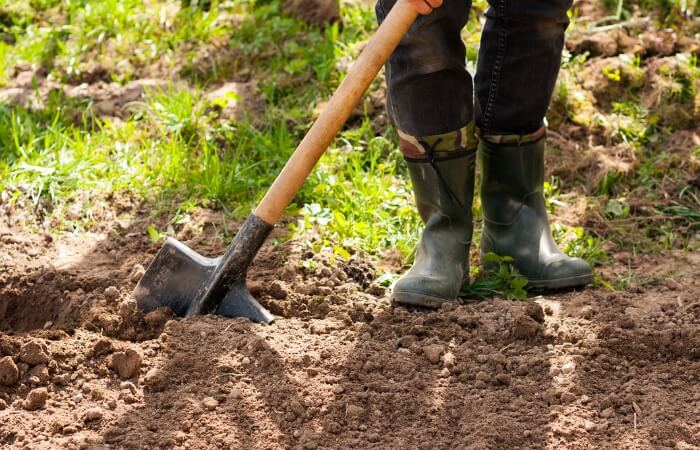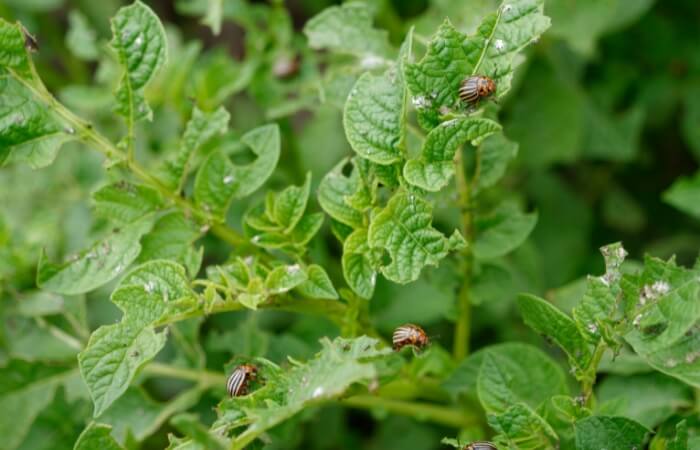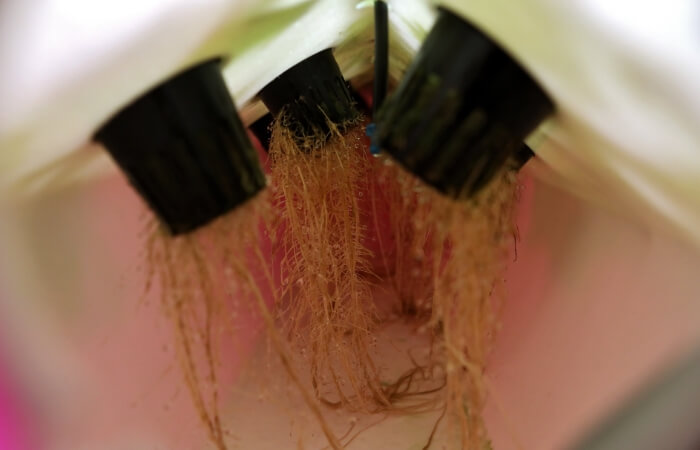Potatoes are a finicky crop prone to diseases and pests, especially if you don’t rotate their location in your garden each year.
Master gardeners know that the best way to ensure future healthy potato crops is to replant a harvested potato garden bed with specific vegetables, herbs, or flowers at the end of each growing season.

To make it easy for you, I put all the crucial details in this guide that explains what to plant after potatoes to improve soil conditions.
Don’t let your next potato crop fail. Instead, follow this guide and master your potato growing skills!
Is Potato Crop Rotation Important?
Potato crop rotation is an essential consideration when you are planning your vegetable garden each growing season.
Potatoes are part of the nightshade family, which are plants in the genus Solanum or related plants in the family Solanaceae. Other nightshade vegetables are eggplant, tomatoes, and peppers.
While crop rotation benefits all home gardens, it’s especially critical for potatoes and other nightshade vegetables. The reason is that these plants attract stubborn disease or pest issues that may inhabit the soil and ruin the next season of plants growing in the same area.
Potatoes are also nutrient-hungry plants that can quickly deplete soil minerals during the growing season. So replanting the same area with potatoes will only leave them struggling to survive unless you fertilize often.
Trying to maintain potato, or any other plant, growth by only adding extra fertilizer will not support a long-term healthy soil environment that includes all the necessary macro and micro-nutrients and microbes to support optimal development.
Crop rotation is the natural way for different plants to contribute to better soil conditions and maintain the nutrients in your garden beds.
When Not To Plant Potatoes After Potatoes Have Been Planted
Most gardening experts state that it’s best to avoid planting potatoes in the same area for a minimum of two years, but three years is better. Any disease or pest issues that begin in one crop will only worsen with the next crop if you plant them in the same location.
The more distance you can place between your current potato plants and the last batch will increase the chances of a healthy crop. Moving potatoes to the soil directly next to last season’s crop isn’t wise.

All vegetables within the Solanaceae family, including potatoes, are prone to blight. This fungal disease is easy to spread and loves cooler temperatures, so it has the ability to overwinter and survive when other plant diseases can’t.
It’s very helpful to keep a chart of plant locations in your garden year after year, so you can reference it when planning where and when to plant your next batch of potatoes. A chart will also help you select the best variety of plants to replenish soil nutrients.
Suppose you see blight on any potatoes in your garden or any other nightshade vegetable you are growing. In that case, it’s a good precaution to remove the plants and dirt from that area and replace it with new soil to help eradicate the issue.
What Should You Plant After Potatoes
The best plants to grow after you harvest potatoes are peas or green beans. Any legumes or beans will add nitrogen to the soil, which will improve the nutrient level for the next vegetables to grow in that area.
Another reason beans are an ideal option to plant after potatoes is that the fruit grows above ground, farther away from any lurking diseases or pests living in the soil.
The biggest thing to remember is to avoid planting any other type of root crop after potatoes, such as carrots or beets.
Pests that may have been munching on the tubers from your potato crop may linger in the soil and begin eating up your new root vegetables because you didn’t give them enough time to disperse to more attractive feeding grounds.
After you plant beans, you should then make the next crop a leafy vegetable such as lettuce or cabbage. Follow that by a round of fruit, such as strawberries, cucumbers, or squash. Ideally, you will now have soil ready for you to plant potatoes again during the next growing cycle.
What To Plant After Potatoes For Control Of Pests And Diseases?

To make planning your crop rotations easier, here is a list of plants you can grow after potatoes to keep specific pests and diseases under control in your garden:
EARLY BLIGHT (Alternaria solani) or LATE BLIGHT (Phytophthora infestans)
- Peas
- Lettuce
- Broccoli
- Beans
- Cabbage
COMMON SCAB (Streptomyces)
- Kale
- Lettuce
- Onions
- Beans
- Cucumbers
Onions are naturally immune to Streptomyces, making them a safe root vegetable to follow potatoes if scab is a concern.
WIREWORMS (Elateridae)
- Onions
- Lettuce
- Alfalfa
- Buckwheat
- Sunflowers
COLORADO POTATO BEETLE (Leptinotarsa decemlineata)
- Sweet potatoes
- Watermelon
- Carrots
- Lettuce
- Cabbage
How Do I Replenish My Soil After Growing Potatoes?
The best way to replenish soil after harvesting potatoes is to work new nutrients into the dirt by adding fresh compost and organic or natural fertilizers.
After amending the soil to fix more significant nutrient deficiencies, you can grow lighter-feeding plants than potatoes that will not draw up much of the minerals from the ground. You can also choose to plant crops that stabilize or add to soil nutrient levels.
Here are some light-feeding crops you can plant after potatoes:
- Parsnips
- Peas
- Dill
- Fenugreek
- Soybeans
- Carrots
- Beets
- Onions
Any legume plants have the ability to produce nitrogen, so they have little need to draw it from the soil during development. The plants also will add more nitrogen to the ground as the foliage decays.
If pest or disease issues are still a concern, you can apply herbicides or pesticides, but it’s best to stick to the most environmentally-friendly product you can find.
Another way to replenish garden soil is to fill the area with an array of herbs or flowers such as:
- Marigolds
- Mint
- Oregano
- Calendula
- Coriander
- Nasturtiums
- Thyme
- Chamomile
In Summary
Potatoes are a staple vegetable for many gardeners because they provide delicious and nutritious tubers to add to meals and store well for months.
To ensure you’ll have a successful potato crop each year, follow this guide so you know the proper way to rotate crops to avoid potato diseases and pests that can lower tuber yield.
A good rule is to follow a routine of potatoes, beans, greens, then fruits. Rotating through these crops will help maintain a healthy and productive garden for all your plants!










